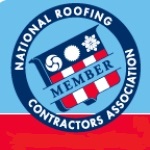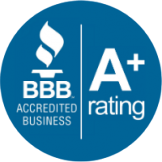Hicksville Roofing: Article About Going Green With Your Roof
Root barriers are barriers on green roofs meant to keep plant root systems from penetrating into the attic. Originally, these barriers were made from concrete, but these barriers often cracked. Today most root barriers for roofs are made from specialty plastics. These plastics are typically made to be flexible.
Hicksville roofer FAQ: How can I keep my roof green in colder climates?For cooler climates, you want to aim for roofs made of materials that don't leech off when it rains. Additionally, insulation is a common concern of homeowners in colder climates. Aim for insulation made of cellulose, and roofs with a sloped top. These two interventions will keep your family warm all Winter.

Mother Nature is all around us. Over the years, protecting the Earth has become one of our most important cultural values. Each day, researchers are hard at work developing ways to minimize our impact on the world around us. Being environmentally friendly goes beyond sorting your recycling and using the right dish detergent, though. If you're a home owner or business owner concerned about your footprint, one part of your building you might think about turning green is your roof. From using recyclable materials during your next roof remodel to installing solar shingles, there are several ways you remodel your roof to minimize your impact on the Earth.
No matter what type of material you choose to build your roof with, there are now alternatives made from recycled and reclaimed versions of those materials. These options are available throughout the United States: for example, Hicksville Roofing options include recycled metal. Even after the life of the roof is finished, these metals can be sent back to plants that re-purpose them for everything from food cans to new cars.
For composite roofs, instead of using fiberglass shingles, you might consider organic shingles made with cellulose. While they currently have a shorter lifespan than their fiberglass cousins, these shingles are much more biodegradable.
Have a question regarding EPDM rubber roofs or roof inspections? Ask a roofer at Long Island Roofing of Hicksville NY.
Thus, at the end of their life they won't end up sitting in a landfill for another hundred years.
For those interested in something a little more far out, there are now roofs that are literally "green" with vegetation. While still relatively uncommon, these green roofs typically have grasses, mosses and shrubs growing on top. They utilize root barriers to prevent damage to the underlying roof deck. Early studies suggest that they help to reduce cooling and heating costs by up to 50%, while providing a unique aesthetic flair to your home. For businesses, it's a great way to show their commitment to forward thinking practices. In fact, some of the most common places you'll see green roofs are on skyscrapers in busy cities. Unfortunately, these roofs are still somewhat cost prohibitive and require a lot of maintenance.
However, not all green roofs are so expensive. Roofs made with solar shingles, for example, might actually leave you with some more "green" in your wallet. These shingles, which are typically a vibrant blue or indigo, collect energy from the sun and store it within the building's backup power supplies. A fairly recent invention, these solar shingles are providing home owners with a new found sense of energy independence.
Finally, for those interested in saving on energy costs, but not quite ready to commit to solar, go for a white roof. White roofs help to reflect heat in hot climates, drastically reducing your spending on air conditioning.









